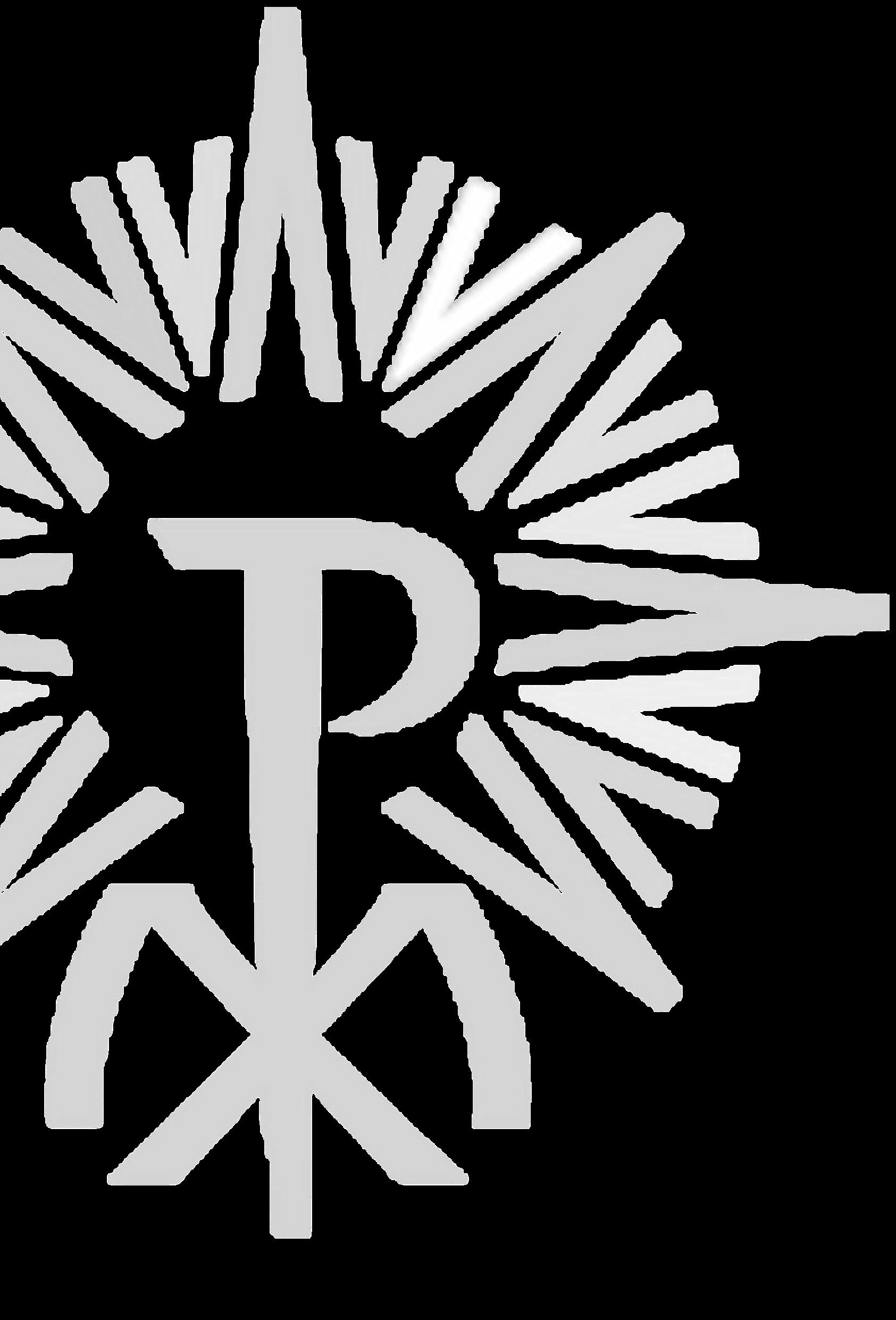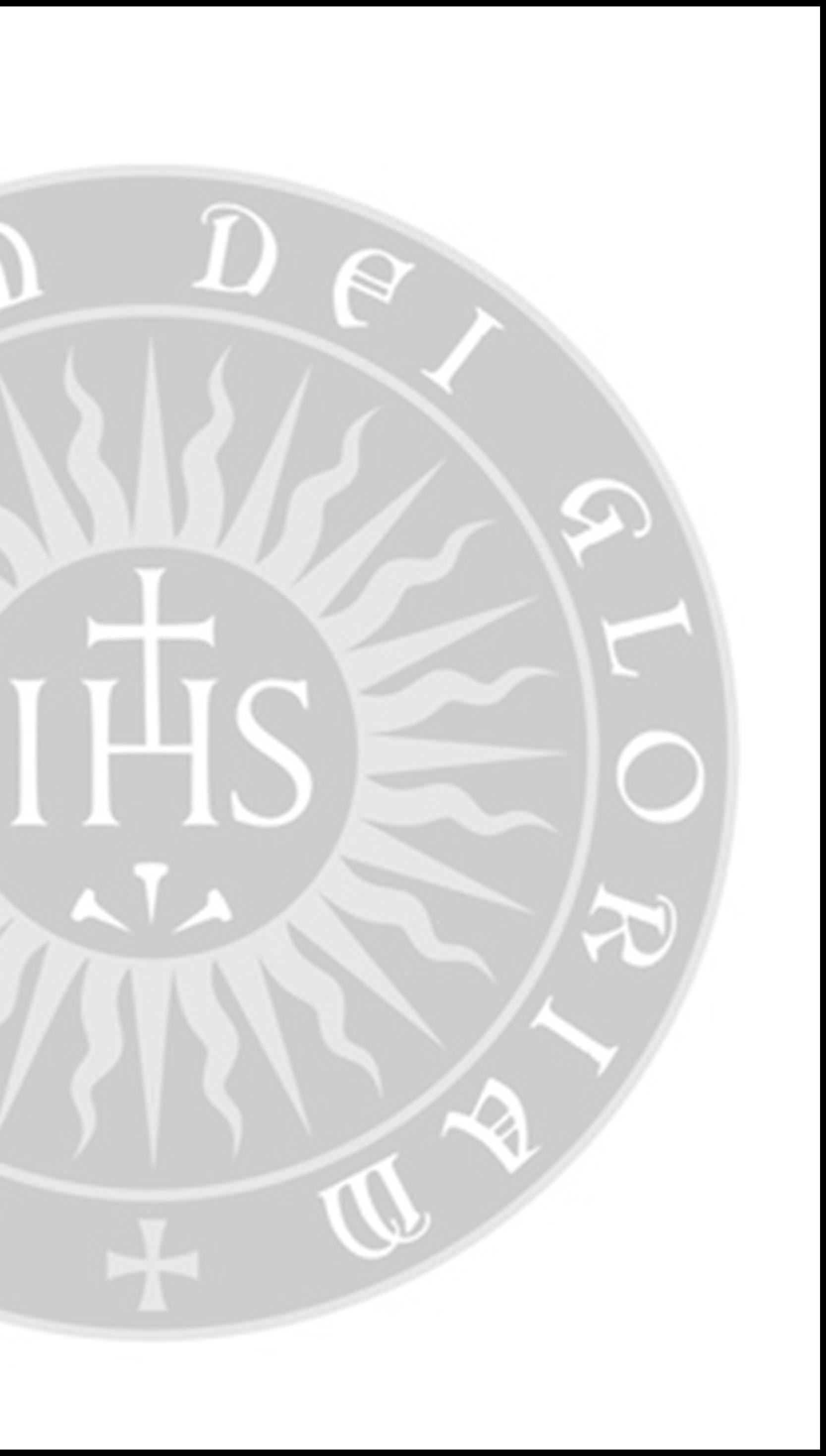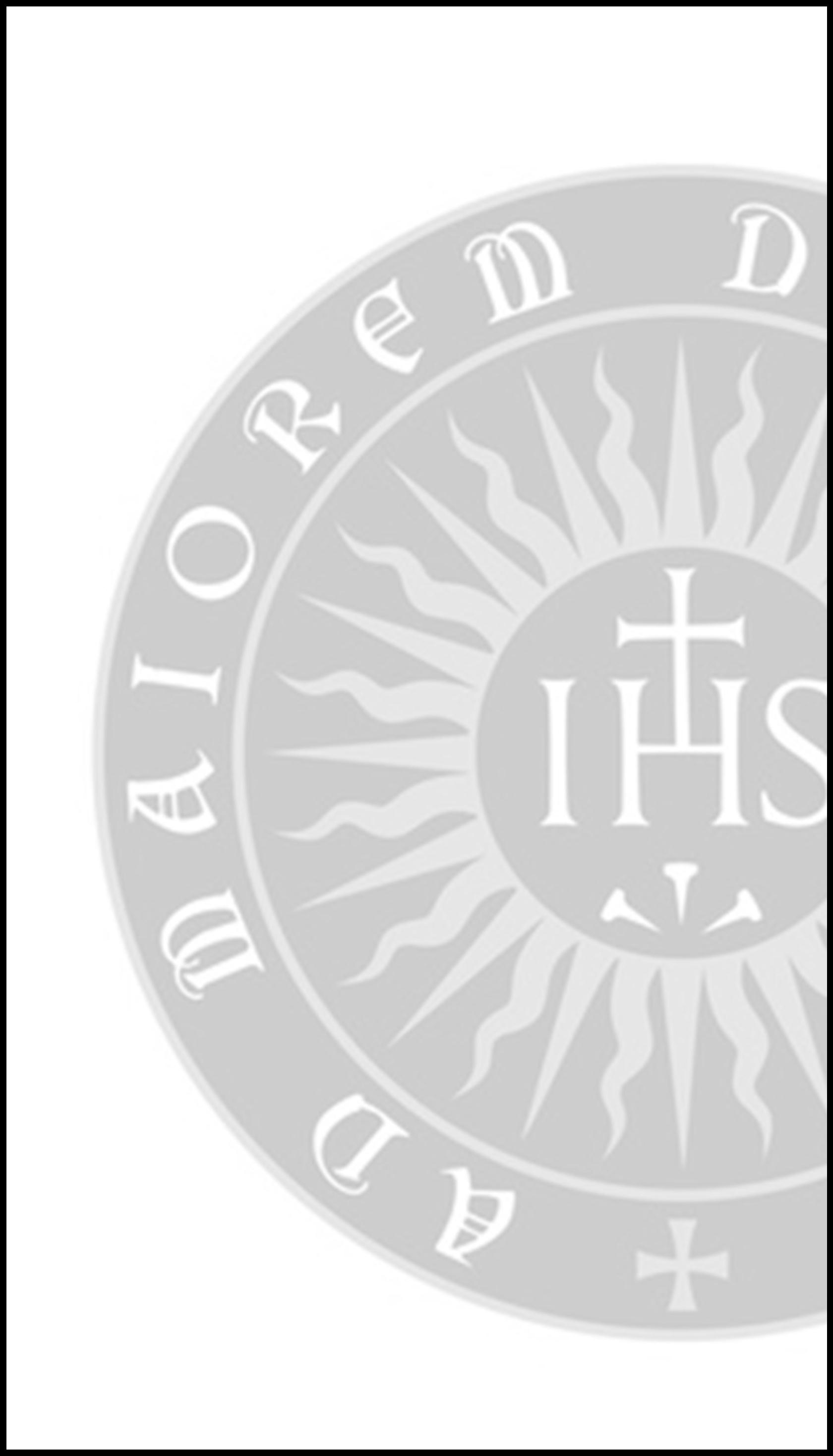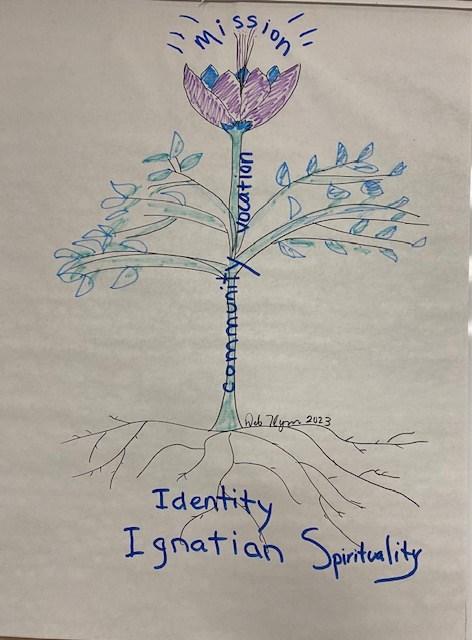

Christian Life Community In USA Handbook
Approved by CLC in USA
Na onal Coordina ng Council on May 15th, 2024




Introduction
The idea of this handbook came from one of our members who was frustrated in locating all the relevant information regarding Christian Life Community (CLC) structure, formation, etc. to share with newer and potential members. In keeping with the CLC way of life, the idea was discerned among the local members, then the circle was widened to include regional, cultural groups until the idea found its way to the governing body of CLC-USA, the National Coordinating Council (NCC). The NCC further discerned the issue. As a result, the NCC gathered and commissioned a team to put together a CLC Handbook.
This handbook provides newer members as well as prospective members an overview of the history of the Christian Life Community (CLC), our governance, our identity, and our formation.
What is CLC?
CLC is a way of life.
“Our community is made up of Christians: men, women, adults and youth, of all social conditions who want to follow Jesus Christ more closely, to deepen our love for him, and to work with Him to build the kingdom of God here on earth.” (General Principles (GP) 4)
We are organized in small communities that then come together as local, regional, and national communities to form One World Community.
Ignatian Spirituality is the source forming us to be Contemplatives in Action, who find God in all things. Through the Spiritual Exercises and Daily Ignatian Examen of Consciousness, we become Discerning, Apostolic people and communities. We are Christ centered, participating in his life, death, and resurrection by meditating and contemplating scripture, by participating in our sacred liturgy, by discerning the revelation of God’s will through the events of our times, by respecting the doctrinal development of the Catholic Church, and by laboring in the apostolic mission Christ has called us to. Mary, the Mother of God, is honored in a special way as the “model of our own col-

laboration in Christ's mission.” CLC is not only a lay vocation but, more importantly, a way of life.
Our apostolic missions involve working for social justice and challenging structural injustices in the following Frontiers: Integral Ecology, Poverty and Globalization, Youth, Family, and Spiritual Ministries.

“The field of CLC’s Apostolic Mission knows no limits; it extends both to the church and the world, in order to bring the Gospel of Salvation to all people.. by opening hearts to conversion and struggling to change oppressive structures.” (GP 8)
The CLC General Principles and Norms
The CLC General Principles and Norms is the primary guiding document for the CLC. It outlines our CLC Charism and defines the structure and governance of our community. The latest document was approved by the General Assembly on September 7th, 1990, and confirmed by the Holy See on December 3rd, 1990 (the full GP version can be found at www.clc-usa.com). A revision to update the document is currently underway.
The CLC Charism
CLC is a way of life that incorporates Ignatian spirituality into our everyday, spiritual, and community lives. We are an apostolic body that uses communal discernment to help us follow where the Holy Spirit calls us in everything we do. CLC is a lay, Ignatian, communal vocation.

The Three Pillars of CLC
1. Spirituality: Ignatian spirituality is a spiritual "way of proceeding" that offers a vision of life, an understanding of God, a reflective approach to living, a contemplative form of praying, a reverential attitude to our world, and an expectation of finding God daily.
2. Community: CLC members live Ignatian Spirituality in community. The help of brothers and sisters sharing the same call is essential for our growth in fidelity to our vocation and mission. In addition, community itself is an integral component of the apostolic witness of CLC.

3. Mission: “As members of the Pilgrim People of God, we have received from Christ the mission of being his witnesses before all people by our attitudes, words and actions, becoming identified with his mission of bringing the good news to the poor, proclaiming liberty to captives and to the blind new sight, setting the downtrodden free and proclaiming the Lord's year of favor.” (GP 8)
Ignatian Spirituality:
The spirituality of CLC is Ignatian. Ignatian spirituality is a way of following Jesus Christ based on the charism of St. Ignatius of Loyola, the founder of the Society of Jesus, also known as the Jesuits. Ignatius’s own conversion experience inspired him to know and love Jesus in a deeply personal and intimate way. He began to pray, talk, and listen to God, and to pay attention to the movements of his heart, desires, and senses, as he felt led to follow and serve God.

Ignatian spirituality is an incarnational spirituality that uses our human bodies as sources of wisdom, discernment, and revelation. Ignatius views the world as our space to serve with grace, respect, and inquiry. He invites us to view what is possible in all things of the world and to imagine the possibilities of our own vocations as true contemporary disciples of Jesus Christ. Values commonly found in Ignatian spirituality are core values of the Gospel, such as authenticity, integrity, courage, love, forgiveness, hope, healing, service, and justice.
The living of Ignatian values through the charism of Ignatian spirituality involves an orientation towards serving Christ in the world using Ignatius’s tools of the Spiritual Exercises, including prayer, contemplation, spiritual direction, discernment, and the daily Examen of Consciousness. Ignatian spirituality leads to a desire to find God in all things, often leading those followers to feel a sense of being “Contemplatives in Action” for Christ.
The Spiritual Exercises
The Spiritual Exercises are a series of meditations, prayers, and contemplative practices developed by St. Ignatius of Loyola to help people deepen their relationship with God and discern God’s will in everyday life. Members who have made their permanent commitment experience the full Spiritual Exercises in a 30 day retreat or a 19th Annotation, where the retreatant prays an hour a day over 9 months with the support of a spiritual guide.
The Examen of Consciousness
The Examen is a powerful technique of prayerful reflection rooted in Ignatian Spirituality. It helps us discern God’s presence and direction in our daily experiences. Here is a practical breakdown
of the five steps involved:
· Become Aware of God’s Presence: Start by acknowledging that God is with you. Be present in the moment, recognizing His nearness.
· Review the Day with Gratitude: Reflect on your day, recalling events, encounters, and emotions. Give thanks for the blessings, both big and small.
· Pay Attention to Your Emotions: Tune in to your feelings. What brought you joy, peace, or discomfort? Notice where God might have been at work.
· Choose One Feature of the Day and Pray from It: Select a specific moment or aspect of your day. Pray about it express gratitude, seek guidance, or offer intercession.
· Look Toward Tomorrow: Anticipate the day ahead. Invite God into your plans, hopes, and challenges.
Remember, the Examen isn’t about perfection; it’s about cultivating awareness and deepening your relationship with God. You can integrate it into your daily routine, perhaps during lunchtime or before bedtime.
The goal of Ignatian Spirituality is to find God in all things.
The core of its spirituality is that God loves us fiercely, passionately, and unconditionally. Because of this love, God's desires and hopes for us are based on who we are: our gifts, talents, preferences, and joys. Once we receive His grace, we are called to share it with others.

What is a CLC Member?
The Christian Life Community is made up of men and women, adults and youth, of all social conditions. They share a desire to increase within themselves and share with others the all encompassing love embodied by Jesus Christ for the building of the ever present Kingdom of God. They have recognized Christian Life Community as their particular vocation within the Church.
To grow in this Ignatian, communal way of life, a CLC member commits to:
· Participation in the Eucharist whenever possible;
· Active sacramental life;
· A daily practice of personal prayer based in Sacred Scripture;

· Daily listening to what God is inviting me to through the practice of a daily review (Examen) and regular spiritual direction;
· An annual interior renewal (retreat) in accordance with the sources of our spirituality;
· Love for the Mother of God.
Finally, members, individually and together, assume responsibility for participating in the life of CLC Community (local, national, world), and to Discern, Send, Support, and Evaluate (DSSE) with each other and as a community to pursue their personal vocation and apostolic works.
Commitment in CLC
CLC is a way of life, therefore membership in Christian Life Community assumes a personal vocation. The word vocation derives from the Latin root “vocare,” to call, and implies a summons or invitation. “Before I formed you in the womb, I knew you. Before you were born I dedicated you.” Jeremiah 1:5
“The very expression “apostolic body” contains in itself the perception of union, link, and bond, that is to say,“commitment”. We are a “body” as long as we are, not only united, but above all committed by the same spirituality, by the same way of proceeding, by the same ideals and by a common mission.” (CLC in Portugal Commitment Handbook, page 5)
"Our Commitment is to present ourselves freely before the Lord and His people and give a visible sign of what we have lived and discerned in our hearts. It is a gesture similar to a marital engagement. In proclaiming before God and our companions that we have committed ourselves to a spirituality, a way of life, and a mission, we are confirming before them our discernment and the gift of ourselves. We claim publicly that the Christian Life Com-
munity is the body within which we live the charism that the Spirit of the Lord has given to us." (Charism #171)
1) Temporary Commitment (1-4 years: General Norm (GN) 2)
Temporary Commitment occurs after the initial stages of formation. It is the expression of a desire to live according to the CLC way of life (GN 2). It is our loving answer, in the spirit of the Gospel and the interior law of love, to God who loved us first. The renewal of the temporary commitment is made yearly until a permanent commitment is made. (CLC Charism #184)
2) Permanent Commitment (2-8 years)
“The Permanent Commitment is the public proclamation that the Christian Life Community is the apostolic body where we wish to live the charism to which the Spirit of the Lord is calling us, committing ourselves with its spirituality and its way of life, and becoming available to be sent and taking responsibility for the mission of the whole body.” (CLC in Portugal Commitment Handbook, page 9)
Those who make their Permanent Commitment are those members who have completed their vocational discernment and have offered themselves to and embraced the CLC’s lifestyle. This stage is necessarily linked to apostolic discernment, as an indispensable element for developing a mission. (CLC Charism #190)
It is important to keep in mind always that the Commitments are made to God and to CLC. CLC is the ecclesial space of recognition of God’s calling. The Community mediates the support and the concrete realization of the response to that vocation.

Small Groups and Meeting Format
The Composition of a Small Group

Small groups create an environment for a spiritual conversation with the Holy Spirit through each other. The group size, normally 5 to 8 people, allows for spiritual conversation within a reasonable meeting time. This gives everyone the opportunity to proclaim the action of the Spirit in their hearts, to listen to its infinite richness, and to be transformed, individually and collectively.
Spiritual Conversation
Spiritual conversation is a process that facilitates the move from a group of individuals to a community that discerns together (Apostolic Community).
For a group sharing session to be spiritual conversation, it requires:
1. Awareness of the Holy Spirit’s presence and work in the individual and especially in the community. “What might God be up to here?”
2. Willingness of each member to openly share from their prayer and experience.
3. Willingness of each member to listen deeply and allow the Spirit to speak through the sharing of the other members i.e. allow myself to be influenced by other members sharing.
4. Self-awareness, spiritual freedom through:
a. Daily prayer,
b. Examen of consciousness,
c. Preparation before the meeting.
Meeting Format:
Check-In
The “check-in” is a short expression of the disposition or inner state of each participant at the beginning of the meeting, perhaps accompanied by a very brief explanation of why he or she is feeling this way.
· How am I as I come into this meeting?
· Acknowledge and Welcome
Spiritual Conversation in Three Rounds of Sharing:
First Round – Each person shares the fruit of their own prayer, uninterrupted, with other members listening deeply and without comment.
Second Round - Each person shares what caught their attention in the first round and how the Spirit moved in them as they listened to the sharing. It is not a time to bring in additional content.
Third Round - During this round the community members share how they experience the communal movement of the Holy Spirit. How is the Spirit moving in the group? What might God be saying to the group? The third round becomes an experience of communal discernment.
Appropriation/Evaluation - Review of the meeting
· Appropriation: Having had the spiritual conversation, is there a next step for the individual or the community? How can the community incorporate the fruits of communal discernment into their lives?
· Evaluation: How was the meeting for you?
· Was the group faithful to the process?
· Did members come prepared?
· Did all members have an opportunity to share?
SOME REMINDERS
· The major activity of any small group meeting is genuine and honest sharing with grateful listening.

· Every person is an expert on his/her own experience.
· Share experiences and insights in a brief, clear manner.
· This is not the place to homilize, moralize, monopolize, have extended discussions, solve problems, rescue, decide, debate, or interfere with another's contribution.
· Come to the meeting prepared with prayer and reflection.
Formation
The purpose of Christian Life Community formation is to invite and engage members in living out the CLC way of life as One Apostolic Community.

PHASES (AND THE DYNAMIC) OF CLC FORMATION
CLC formation is a process of personal and community conversion in which we grow in identification with Christ in new situations, in new dimensions of our personality, and at new levels of profundity. At each phase of formation, the CLC member tries to assimilate certain values and develop certain attitudes, which are those of the Spirit of the Lord. These values relate to each person’s way of being and living, with new ways of loving God and one’s neighbor. The ultimate aim of CLC is to form communities of discerning individuals ready for mission in any sphere of life as the call is experienced and discerned.
During the process of assimilation of values in following Christ, CLC formation proposes a journey based on the Spiritual Exercises of St Ignatius: Reception/Welcome, Laying the Foundations of Vocation, Discernment of Vocation, and Apostolic Discernment. During this process, we live through a continuous conversion by the grace of Our Lord, which will last throughout our lives.
The Holy Spirit forms the individuals and the group. A group guide (generally from outside of the group), who knows the process, helps the community move through the stages of formation. The primary responsibility of the group guide is to help the group discern the movement of the Spirit.
Ongoing formation takes place at the group meetings.
Assumptions:
· The three charisms of CLC Ignatian Spirituality, Discerning Community, and Apostolic Mission — are the basis of our CLC way of life.
· A holistic spiritual life of individuals and communities must include an integration of these charisms.
· Some elements of these charisms should be part of for-
mation from the beginning as reflected in our General Principles and other formative documents.
· Engagement with the broader CLC experience local, regional, national, world is essential.
· Formation is meant to provide a unified foundation from which to grow in the CLC way of life.
History of CLC
Christian Life Community - Historical Overview
In 1563 A young Jesuit, John Leunis, began to gather college students in Rome for spiritual enrichment using the Spiritual Exercises of St Ignatius of Loyola. They became known as Marian Congregations and they spread as the Jesuits moved around the world.
When the Jesuits were suppressed in 1773, the Marian Congregations were put under the local bishops. During those 70 years, they became much more numerous but lost the Ignatian charism/identity. Marian Congregations became a pious mass movement, different from what John Leunis and Ignatius intended.
When the Jesuits were restored, they returned to work with Marian Congregations. In 1922 Fr. Ledochowski, Superior General of the Society, convened a meeting of Jesuits working with the Marian Congregations or Sodalities, as they are called in some countries, and established an office in the Jesuit Curia to support their renewal. Renewal got a second push from Pope Pius XII in Bis Saeculare, an authoritative statement on the authentic identity of the Marian Congregations and a pressing call for reform.

By 1954, the World Federation of Marian Congregations was formed and met for the first time in Rome. The Federation held a second Assembly in Newark, New Jersey, in 1959 and a third in 1964 in Bombay, India. The delegates begin to develop and agree on the general principles to replace the “Common Rules.” Although the new vision and direction was agreed on in 1964, the Federation chose to wait to act on them until the end of the Second Vatican Council. They wanted to be sure that the Gen-
eral Principles developed by the Federation were consistent with the direction set by the Council.
At its Fourth Assembly in 1967, the organization’s name changed to World Federation of Christian Life Communities, and“General Principles” were approved and sent to Rome to be confirmed by Pope Paul VI, who approved a three-year trial of the General Principles. In 1971, at the Fifth Assembly in Santo Domingo, Dominican Republic, the delegates worked through a challenging conflict to amend the General Principles and send them to Rome for final approval.

World Assemblies continue to this day as the governing body of the World Christian Life Community. The delegates deliberate and discern around a theme to assess the current situation in the national communities, discern together the direction for the next few years, and elect leadership to facilitate implementation of initiatives between assemblies. The themes were:
· 1973: Augsburg, Germany: The liberation of all men and women.
· 1976: Manilla, Philippines: The call to be poor, poor with Christ, for a better service.
· 1979: Rome, Italy: Call Towards a World Community, at the service of One World.
· 1982: Rhode Island, USA: The challenge to be one World Community on a mission to bring about justice. After this assembly, the name changed to World Christian Life Community.
· 1986: Loyola, Spain: Seeing Mary as a model of our mission, being asked to do “whatever Christ tells us.”
· 1990: Guadalajara: An international community “at the service of the Kingdom, to go out and bear fruit.”
· 1994: Hong Kong: CLC Community in Mission. “I have come to bring fire to the earth, and how I wish it were blazing already!”
· 1998: Itaici (Brasil): Deepening our identity as an apostolic Community – clarifying our common mission. “CLC, a letter from Christ, written by the Spirit, sent to today’s world.” The community agreed to become an Apostolic Community.
· 2003: Nairobi, Kenya: Sent by Christ, members of one body.
· 2008: Fatima, Portugal: Journeying as an apostolic body:
Our response to this grace from God. “The apostles gathered around Jesus and told him what they had done and taught” (Mk 6, 30-34).
· 2013: Lebanon: From our Roots to the Frontiers.
· “This is my son, The Beloved, listen to what He says” (Mk 9:7).
· Out of this assembly, the Four Frontiers were named: Integral Ecology, Poverty and Globalization, Youth, and Family.
· 2018: Buenos Aires, Argentina: CLC is a gift for the Church and the world
· 2023: Amiens, France: Discerning Paths for Hope. A fifth Frontier was named: Spiritual Ministries.
CLC is present in more than 80 countries and continues to grow. Drawn from the CVX – CLC World Website cvx-clc.net
Governance of CLC
World CLC is governed by an Assembly made up of 2 to 4 representatives of each member National Community. The Assembly meets every 5 years to discern how God has been at work in the World Community and how it is being called in the next few years. The Assembly drafts and approves a final document that reflects the priorities. Finally, it elects an Executive Council to facilitate the implementation of the assembly goals.
CLC in USA is diverse in many ways including age, race, culture, and language. Local groups meet in five different languages: Spanish, Vietnamese, Korean, Polish, and English. Local communities are organized into geographic and cultural regions. Each region and cultural group has a representative to the governing body, which is called the National Coordinating Council (NCC). The NCC sets direction for the National Community and makes decisions about major programs and initiatives. It is led and supported by a discerned Executive Committee that manages the implementation of priorities.

CLC in USA Safety and Protection
It is imperative that all CLC in USA members ensure that they are in FULL COMPLIANCE with all local, state, federal, and organizational laws, policies, guidelines, and mandates that involve the safety of both the members serving and populations being served. CLC Members should consult their diocese.

Appendix A - The Spiritual Exercises of St. Ignatius
The exercises are divided into four “weeks” of varying length with four major themes:
1) First week: Principle and Foundation (selfawareness) is focused on experiencing God’s deep and endless love, and opening one’s heart to conversion, therefore discovering God’s Mercy. We recognize our failings and shortcomings, seeking spiritual freedom from what hinders a relationship with God. It is a guide for spiritual growth and discernment. Its purpose is to help us understand who we are, why we are here, and how we should live. It invites us to respond to God’s love with gratitude and generosity, and to use everything in this world as a means to grow closer to God and serve others.
2) Second Week: Exploring the life of Jesus through the Four Gospels. You are invited to use your imagination to enter the scene and engage your senses.
3) Third Week: Focusing on the passion of the Lord, from Calvary to the crucifixion - The Passion of Christ.
4) Fourth Week: The resurrection of Jesus and the new life that comes from life in Christ - a contemplation on God’s love. Ignatius believed that love is all about giving and receiving, and that reflecting on all we have been given by a power greater than ourselves can transform our lives.





SUSCIPE


St. Ignatius of Loyala


Take, Lord, and receive all my liberty, my memory, my understanding, and my en re will, All I have and call my own. You have given all to me. To you, Lord, I return it. Everything is yours; do with it what you will. Give me only your love and your grace, that is enough for me.

4511 West Pine Blvd, Saint Louis, MO 63108
info@clc-usa.com
